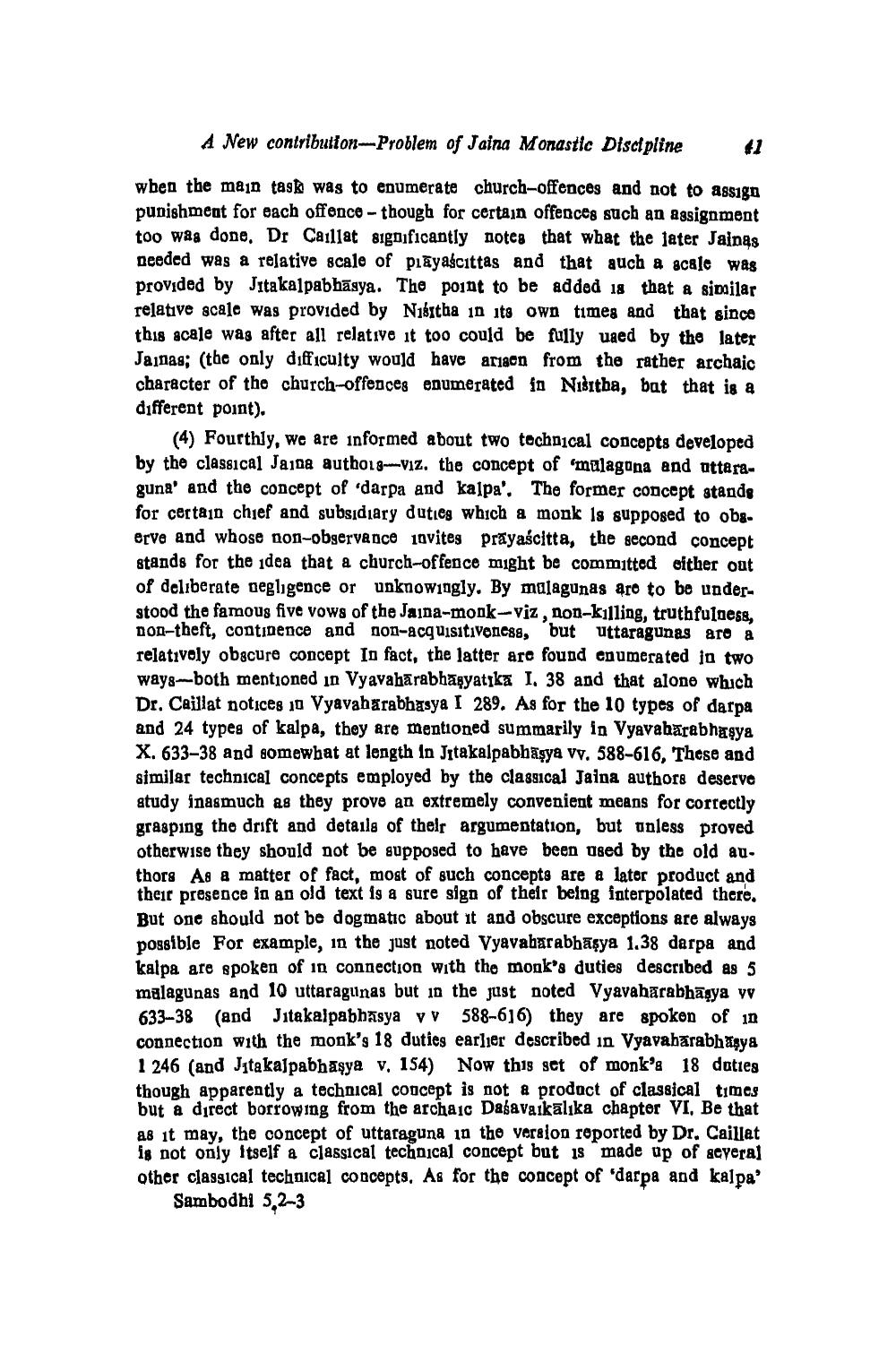________________
A New contribution-Problem of Jaina Monastic Discipline
when the main task was to enumerate church-offences and not to assign punishment for each offence - though for certain offences such an assignment too was done. Dr Caillat significantly notes that what the later Jainas needed was a relative scale of piayaścittas and that such a acale was provided by Jitakalpabhasya. The point to be added is that a similar relative scale was provided by Nikitha in its own times and that since this acale was after all relative it too could be fully used by the later Janas; (the only difficulty would have arisen from the rather archaic character of the church-offences enumerated in Nikitha, but that is a different point).
41
(4) Fourthly, we are informed about two technical concepts developed by the classical Jaina autho18-viz. the concept of 'malaguna and uttaraguna' and the concept of 'darpa and kalpa'. The former concept stands for certain chief and subsidiary duties which a monk is supposed to observe and whose non-observance invites prayaścitta, the second concept stands for the idea that a church-offence might be committed either out of deliberate negligence or unknowingly. By mulagunas are to be understood the famous five vows of the Jaina-monk-viz, non-killing, truthfulness, non-theft, continence and non-acquisitiveness, but uttaragunas are a relatively obscure concept In fact, the latter are found enumerated in two ways-both mentioned in Vyavaharabhāṣyatika I. 38 and that alone which Dr. Caillat notices in Vyavaharabhasya I 289. As for the 10 types of darpa and 24 types of kalpa, they are mentioned summarily in Vyavaharabhasya X. 633-38 and somewhat at length in Jitakalpabhāṣya vv. 588-616, These and similar technical concepts employed by the classical Jaina authors deserve study inasmuch as they prove an extremely convenient means for correctly grasping the drift and details of their argumentation, but unless proved otherwise they should not be supposed to have been used by the old authors As a matter of fact, most of such concepts are a later product and their presence in an old text is a sure sign of their being interpolated there. But one should not be dogmatic about it and obscure exceptions are always possible For example, in the just noted Vyavaharabhagya 1.38 darpa and kalpa are spoken of in connection with the monk's duties described as 5 malagunas and 10 uttaragunas but in the just noted Vyavaharabhagya vv 633-38 (and Jitakalpabhasya v v 588-616) they are spoken of in connection with the monk's 18 duties earlier described in Vyavaharabhasya 1246 (and Jitakalpabhaşya v. 154) Now this set of monk's 18 duties though apparently a technical concept is not a product of classical times but a direct borrowing from the archaic Daśavaikalika chapter VI, Be that as it may, the concept of uttaraguna in the version reported by Dr. Caillat is not only itself a classical technical concept but is made up of several other classical technical concepts. As for the concept of 'darpa and kalpa' Sambodhi 5,2-3




